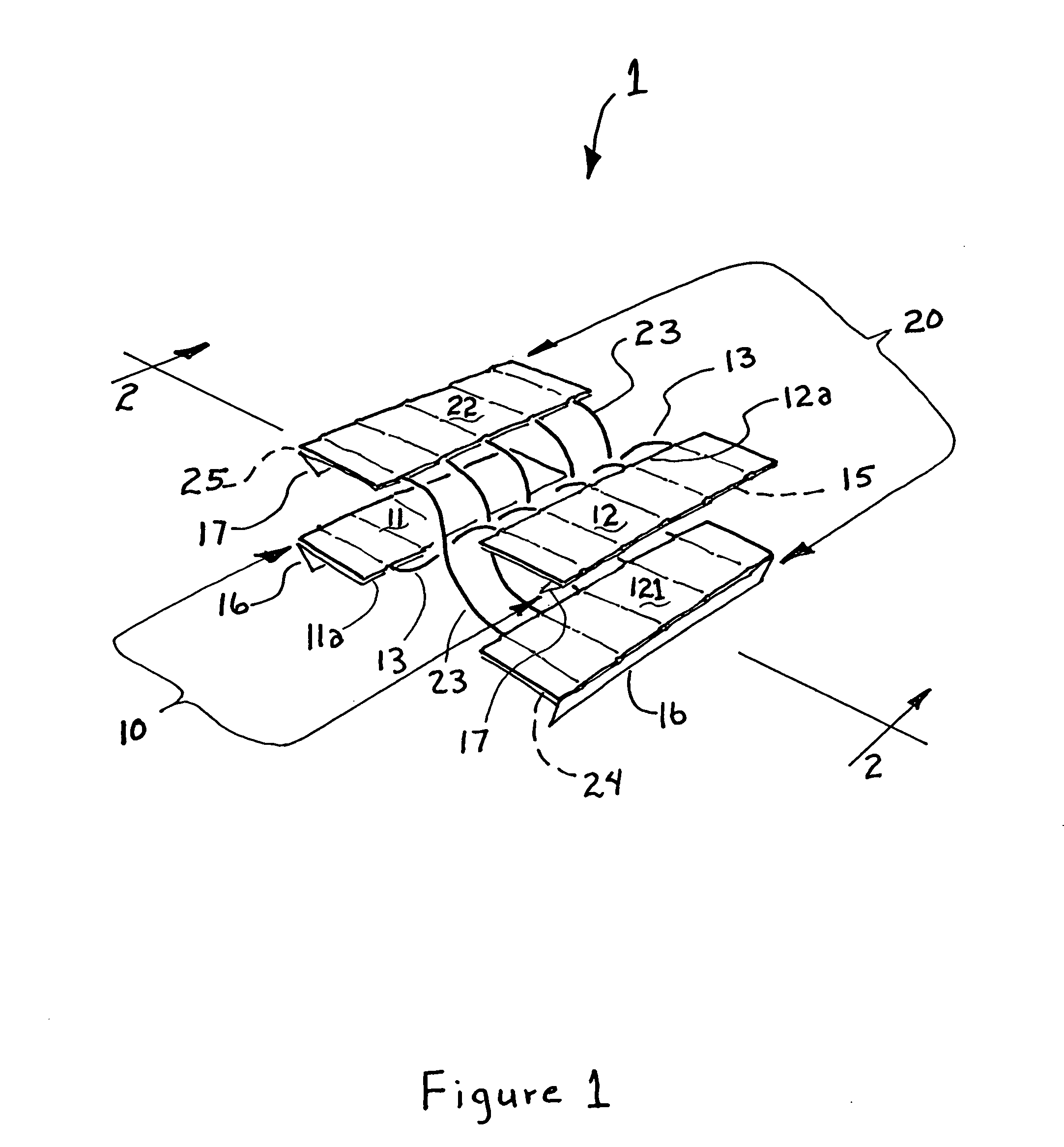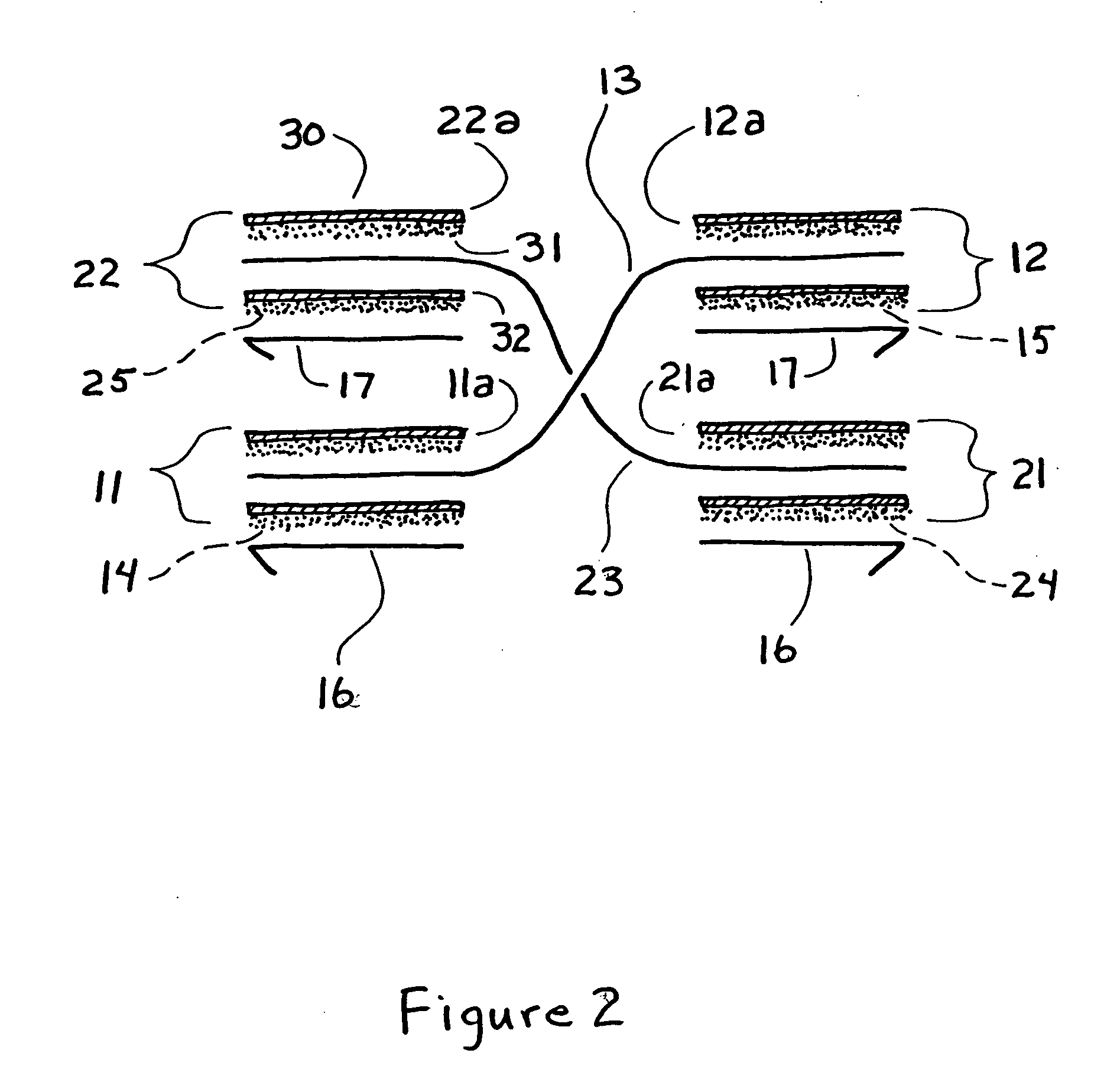Suture bandage
a bandage and bandage technology, applied in the field of future bandage, can solve the problems of not providing for the side of the wound to be drawn together, performed by trained personnel, etc., and achieve the effect of easy cutting to siz
- Summary
- Abstract
- Description
- Claims
- Application Information
AI Technical Summary
Benefits of technology
Problems solved by technology
Method used
Image
Examples
Embodiment Construction
[0017]FIGS. 1 and 2 show the general configuration of one embodiment of the suture bandage 1 of the invention. It is shown ready for use but not applied to a patient. FIG. 1 is an oblique perspective view of the suture bandage 1. FIG. 2 is an end-on, exploded cross-sectional view of the suture bandage 1, as viewed along line 2-2 in FIG. 1. FIG. 2 is shown expanded in the vertical dimension to more clearly illustrate the arrangement of the elements.
[0018] As best seen in FIG. 1, the suture bandage 1 comprises two linked, spaced-apart, interlaced sets 10 and 20 of adhesive patches and filaments.
[0019] The first set 10 of adhesive patches includes spaced-apart adhesive patches 11 and 12 linked by a plurality of filaments or tensile bands 13. The filaments may be stiff, or stiff in tension and otherwise flexible or may be elastic. In the example shown, the patches 11 and 12 are of generally rectangular shape, but the patches need not be rectangular. The patches 11 and 12 are disposed ...
PUM
 Login to View More
Login to View More Abstract
Description
Claims
Application Information
 Login to View More
Login to View More - R&D
- Intellectual Property
- Life Sciences
- Materials
- Tech Scout
- Unparalleled Data Quality
- Higher Quality Content
- 60% Fewer Hallucinations
Browse by: Latest US Patents, China's latest patents, Technical Efficacy Thesaurus, Application Domain, Technology Topic, Popular Technical Reports.
© 2025 PatSnap. All rights reserved.Legal|Privacy policy|Modern Slavery Act Transparency Statement|Sitemap|About US| Contact US: help@patsnap.com



